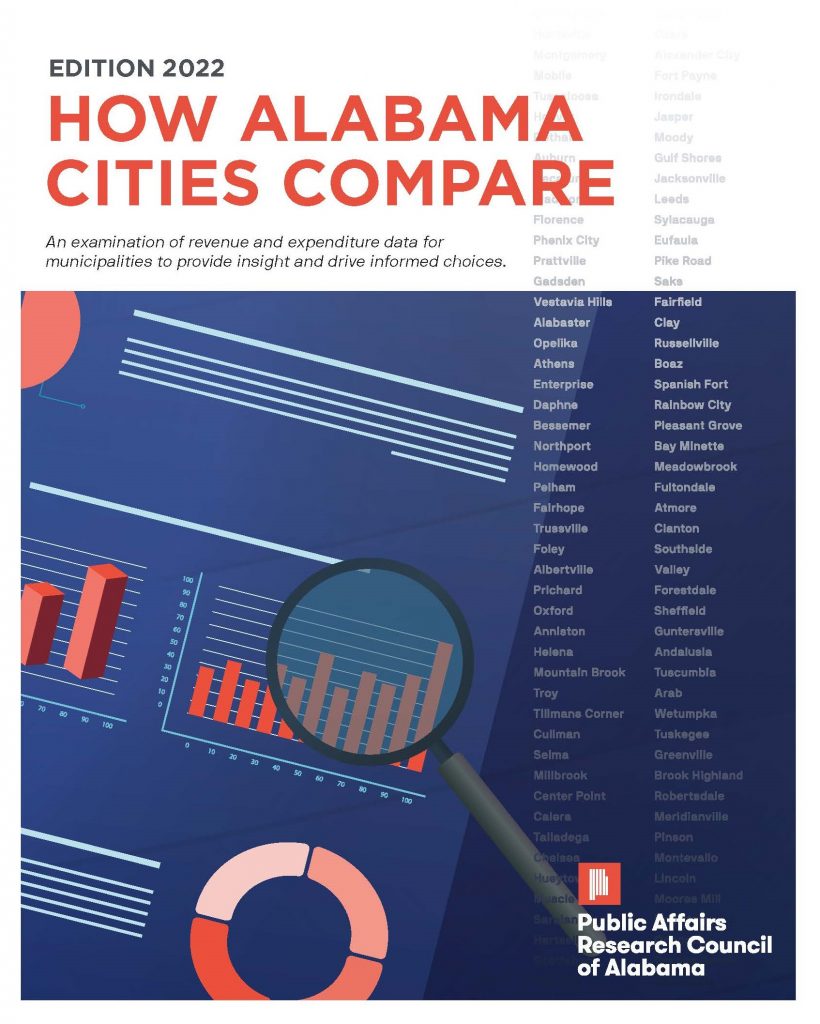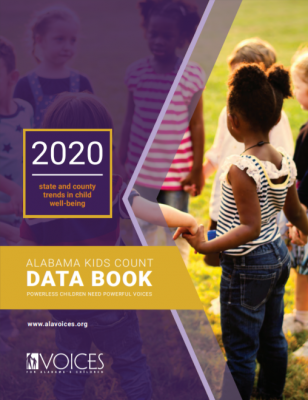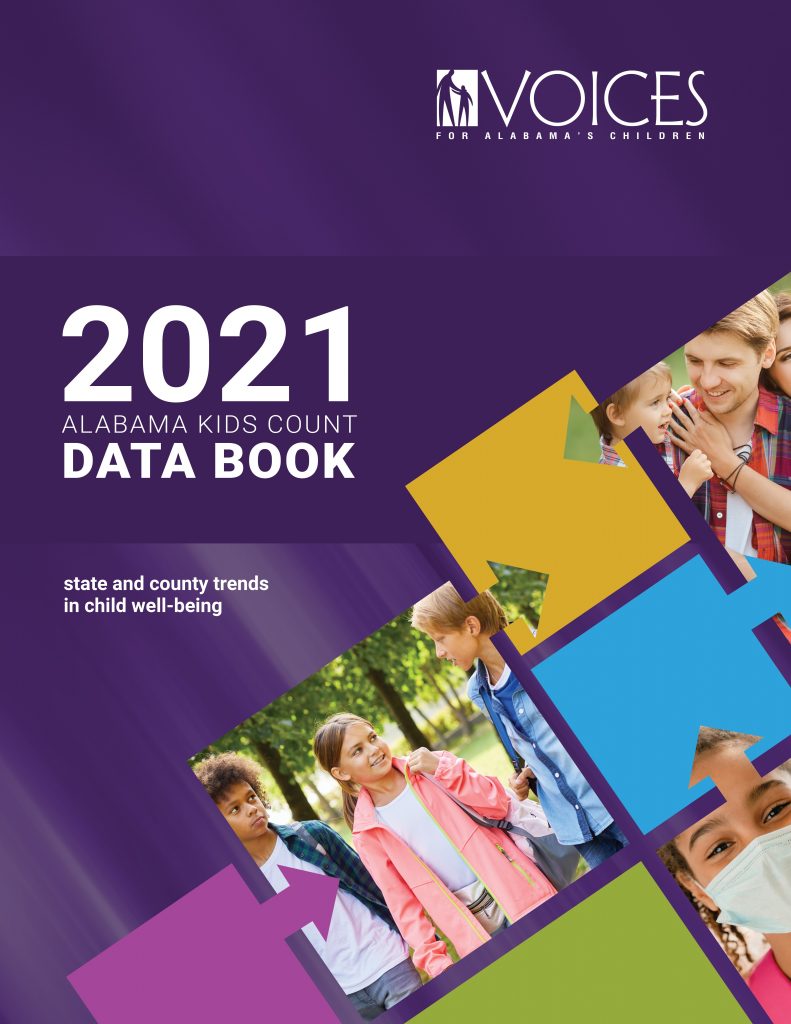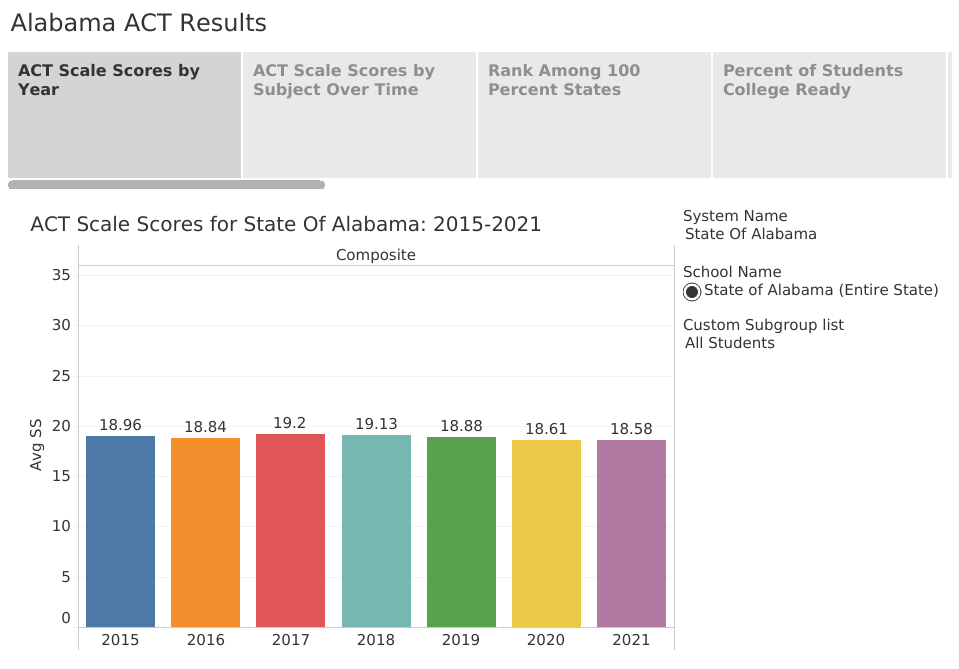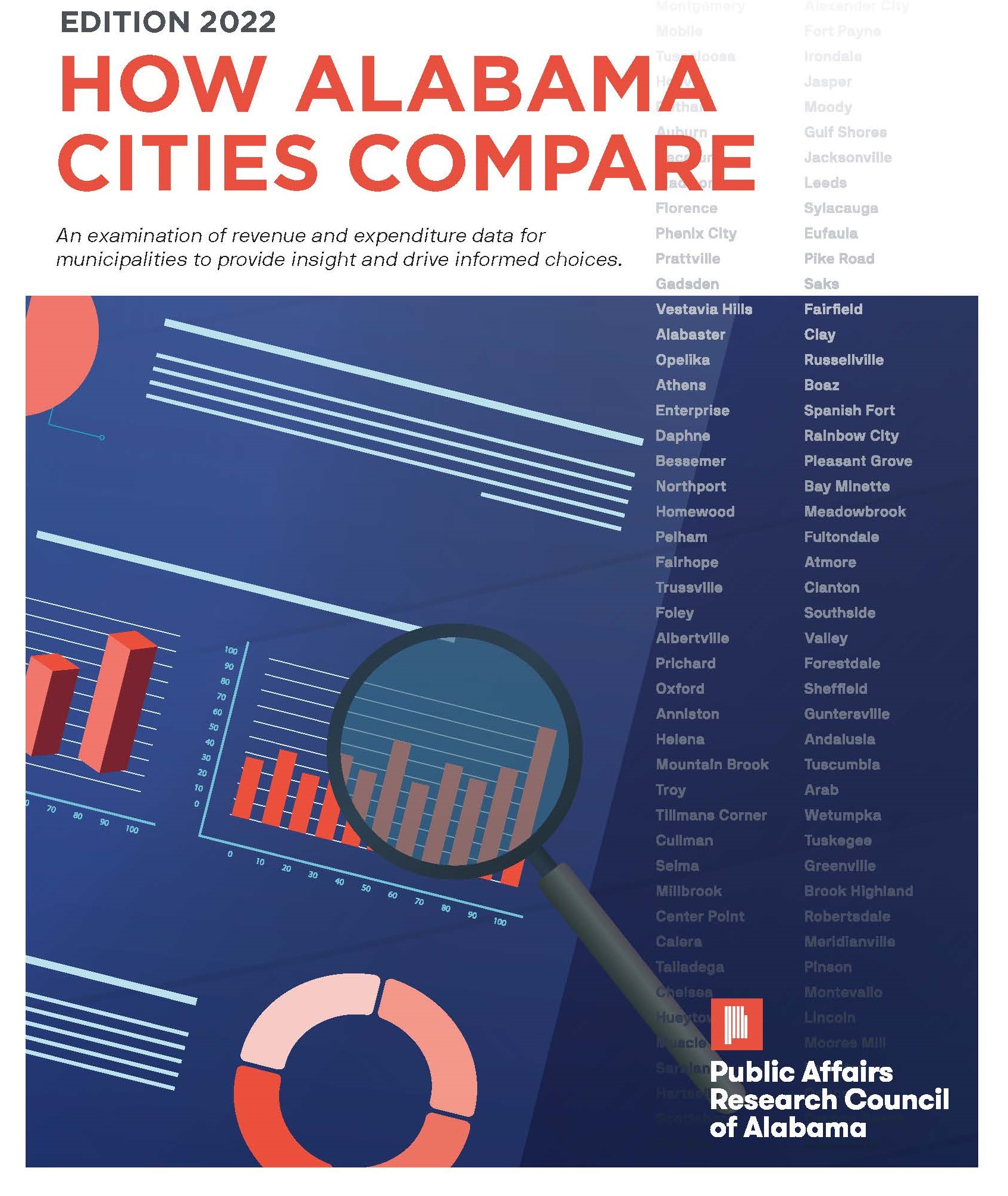
Our 2022 edition of How Alabama Cities Compare (the tenth edition of PARCA’s study of Alabama city finances) introduces a new methodology, highlights the challenges of comparing municipal finances, and proposes a better way to collect the information in a standardized way that should produce comparable data more quickly. After building consensus and adjusting existing practices, such a system would save cities time and provide the data they need to manage their affairs.
Understanding a city’s revenues and expenditures in comparison to other cities is a fundamental tool for effective management.
By benchmarking against neighbors, a city may discover it is spending more than necessary. Alternatively, city leaders may conclude that a higher level of investment puts the city at a competitive advantage, providing a higher level of service and better quality of life for residents.
Unfortunately, making such comparisons is difficult in Alabama. Unlike other states, cities in Alabama are neither required nor encouraged to use a uniform chart of accounts, a standard system for coding revenues and expenditures.
Nor does Alabama have an effective system for publishing and sharing the kind of comparable data that could be produced with a uniform chart of accounts.
For instance, North Carolina, Georgia, and Florida have a statewide reporting system that makes city and county financial information available online in a downloadable format that allows for detailed comparisons between peer cities or counties.
If Alabama wants to gather this data and equip its cities with a tool for comparison, the U.S. Census Bureau’s Annual Survey of State and Local Finances provides an existing base of information already submitted by city governments.
In terms of tax collections, an analysis of the most recent data from the Census survey finds:
- Alabama cities heavily depend on sales tax, with almost 60% of revenue coming from that source.
- Of cities with populations more than 20,000, per capita tax collections range from $2,674 in Homewood to $402 in Prichard.
- Oxford has the highest per capita sales tax revenue at $1,502 per resident.
- Mountain Brook is the only city in Alabama to collect more in property taxes than in sales, with 46% of municipally collected revenue coming from the property tax.
- Birmingham leads the cities in occupational and business licenses taxes per capita, with that revenue contributing 42% of city tax revenue.
Meanwhile, on the expenditure side, the survey reveals:
- The governments in North Alabama spend more than governments in the rest of the state because they operate public utilities, including municipal electricity providers.
- Excluding utilities, Birmingham and Bessemer, both cities that receive an influx of commuters, spend more per capita on the broad range of municipal services. That includes topping the list for per capita spending on police and fire.
- Oxford tops the list in per capita spending on parks and recreation. Smaller cities that report the operation of municipal sports, arts, and recreation facilities rank high in this category.
- The data offers the potential to track spending on municipal courts, jails, solid waste disposal, and other categories of spending, but currently, cities appear to diverge widely in how they report that information in the survey.
Working with state officials and with assistance from the U.S. Census Bureau, Alabama local governments could develop a more streamlined system for generating and reporting this data. With closer agreement on how to categorize particular revenues and expenditures, the survey could provide clearer, more actionable comparable data. The survey includes questions on debt. Better reporting of this data can provide more transparency to the public. A more robust system could also provide better accountability and oversight, potentially avoiding bankruptcy and scandal.
However, it will take leadership, likely by state officials, to gather consensus and execute a system cities, counties, and other local entities are motivated to participate in.
Read the full report here: How Alabama Taxes Compare, 2022 Edition

